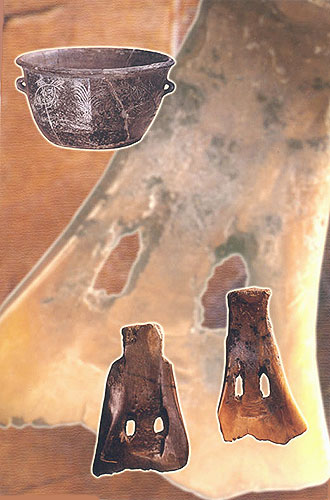| Art Q&A > Archeology |
|
|
Hemudu Site
Archaeological site of the Neolithic
Location: Yuyao, Zhejiang Province
Period: 5000-3000 BC
Excavated in 1973
Significance: It is the first find of the mid-Neolithic culture in the lower reaches of the Yangtze River. The large amount of cultural relics unearthed at the Hemudu Site bears proof that both the Yangtze River Valley and the Yellow River Valley are the cradles of the ancient Chinese civilization.
A site of the New Stone Age, the Hemudu Site
is under the state protection. It was located in the northeast of the
village of Hemudu in Yuyao City and first discovered in 1973.
Hemudu Site, covering an area of about 40,000 square meters, is an important village site in the New Stone Age in China. It is traced back to 6,000 and 7,000 years ago. The site is found to have four cultural layers overlapped. The third and the fourth layers are the earliest cultural layers of the New Stone Age that have been found in the lower reaches of the Yangtze River and along the southeast coast of China.
More than 6,700 pieces of relics has been unearthed after two rounds of exhumations including production tools, living utensils and construction component with mortice and tenon joints, and thousands of pottery ware and bone ware with fine decorative grain engraved on them. The mortice and tenon unearthed here are the earliest of the wooden architecture that have ever been found in China. The remains of the cultured padding grains, wood structure, textile technology and quants are also the earliest found in China. Among the remains of animal bones of pigs, dogs and water buffaloes reared by the primitive men.
The Museum of the Hemudu Site is the theme museum based on the Hemudu Site. It was completed in May 1993. With an area of 26,000 square meters, the museum consists of two sections: the unearthed site and the cultural relics discovered. The Hemudu Site Museum has attracted more and more tourists from both home and abroad. |
||||
All rights reserved. Reproduction of text for non-commercial purposes is permitted provided that both the source and author are acknowledged and a notifying email is sent to us. |
||||
 |
 Introduction
Introduction
 Museum of the Hemudu Site
Museum of the Hemudu Site